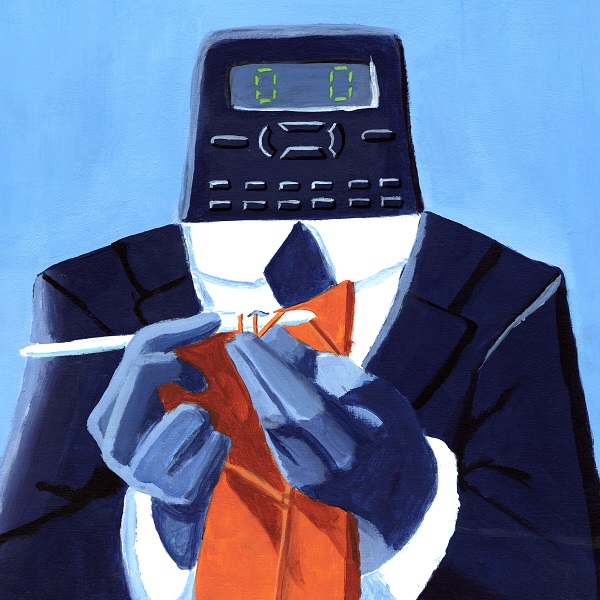Crocheting Math
Illustrated by Derek Ung
A few years ago, I saw the friend of a friend crocheting, and like most people I confused it with knitting. I expressed interest, she showed me the basics, I failed miserably.
 I saw crochet as one of these art forms that only hands-on people could excel at. But I am a fairly competitive person and I like to be good at things, so when I saw a crochet hook in a store, about a year ago, I bought it and fought until I was able to complete a single row. Then, I slowly learned more techniques and soon after completed my first scarf.
I saw crochet as one of these art forms that only hands-on people could excel at. But I am a fairly competitive person and I like to be good at things, so when I saw a crochet hook in a store, about a year ago, I bought it and fought until I was able to complete a single row. Then, I slowly learned more techniques and soon after completed my first scarf.
One of my main areas of interest is mathematics, so when I stumbled upon a mention of hyperbolic crochet ( youtube.com/watch?v=eeLpkCZkWfc ) in a Numberphile video, I fell down a hole. In 1997, Dr. Daina Taimina of Cornell university saw a paper model of the hyperbolic plane (a complex, saddle-shaped surface in mathematics). The delicate model was hard to construct and could not be manipulated. So she used a simple crochet pattern to make a model which could show the different properties of the plane without permanently altering it. (She did a TED Talk about the whole process. youtube.com/watch?v=w1TBZhd-sN0)
In 2005, Christine and Margaret Wertheim saw the disastrous effect global warming was having on coral, bleaching and effectively killing it. The two sisters turned to art to address the issue and used hyperbolic crochet in their Crochet Coral Reef project (crochetcoralreef.org ). They paired traditionally feminine handy-craft with mathematics, a coupling that was received critically when Taimina first proposed the idea.
I first became familiar with this project through Margaret Wertheim’s TED Talk about the beauty of mathematical crochet. (ted.com/talks/margaret_wertheim_crochets_the_coral_reef?language=en ) I was fascinated by the thought that thousands of women around the world had been crocheting hyperbolic shapes for decades, unnoticed and unknowing. The basic algorithm is simple, an increase in every N stitch, also known as the pattern for ruffles. Mathematics is a field often viewed as too complex to even try to understand or too disconnected from daily life to be of interest. But here, ordinary people were manipulating mathematical objects without a second thought and unknowingly learning about the idea of constant negative curvature that is part of the hyberpolic plane.
I am interested in exploring the different ways in which the principles of crochet can be utilized to model other mathematical concepts. I find the translation of algorithms to yarn fascinating; the process is elegant and the act of crocheting by itself is deeply rooted in knot theory. By reproducing different models, I hope that others might find an interest in mathematics and maybe others will want to look at other art forms through a mathematical lens, and vice versa.

Comments
1630713
March 12, 2017I first clicked on this article because I love knitting and know it’s different then crocheting yet i still just think of them as one. This made me relate with your article right away. It is such an interesting idea and thought of turning something complex, tedious and quite boring to most and turning it into something beautiful that people will appreciate. It doesn’t take away it’s complexity yet it keeps it simple. This was so lovely to read and it’s such a nice concept to turn math into art. I also enjoyed you giving video references to where you got the ideas and thoughts which inspired this article. Gave nice context and they were enjoyable to watch! nice work.
Vanilla1998
March 17, 2017I found your article very interesting and never thought that crocheting could be related to math. My grandma showed me how to crochet but I founded it hard. Since I love mathematics, I think that by seeing crocheting with a mathematical approach it would be more interesting and easy for me. People can now enjoy this activity without being frustrated because it’s too difficult and be proud to crochet a piece of clothing or accessory on their own. Your article also made me think about how mathematics are found in our daily life actions and objects without us even realizing it.
You have to be registered and logged in in order to post comments!